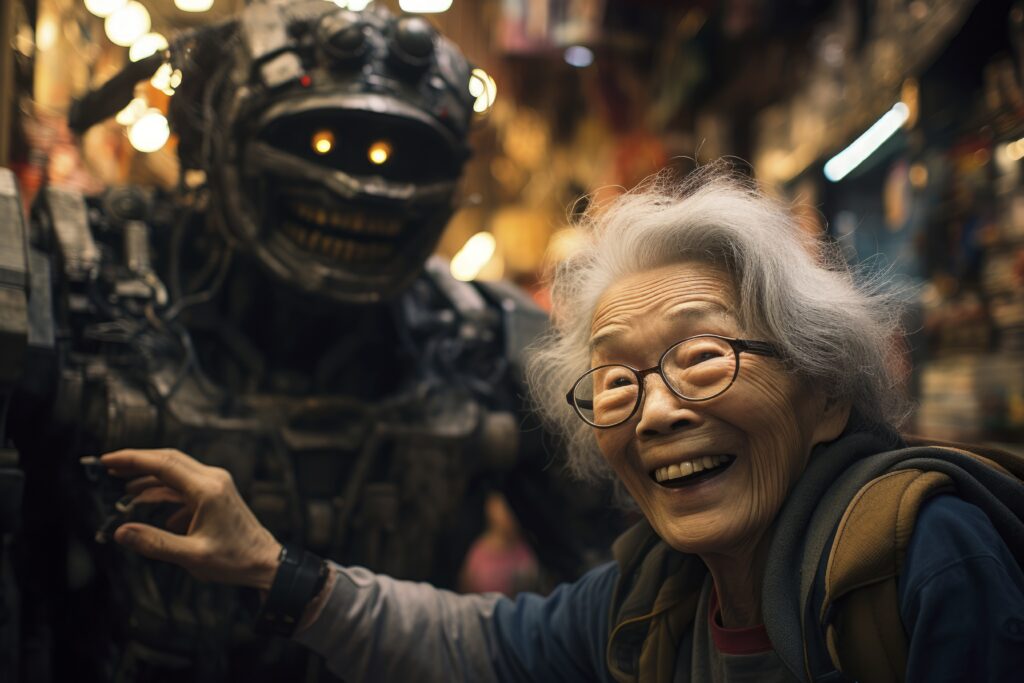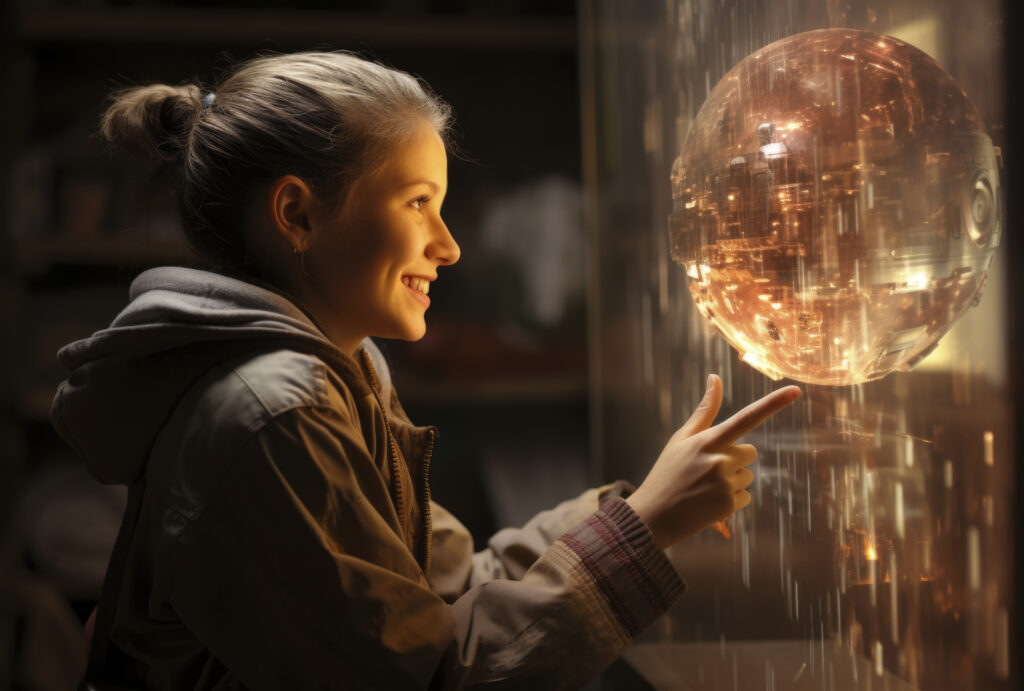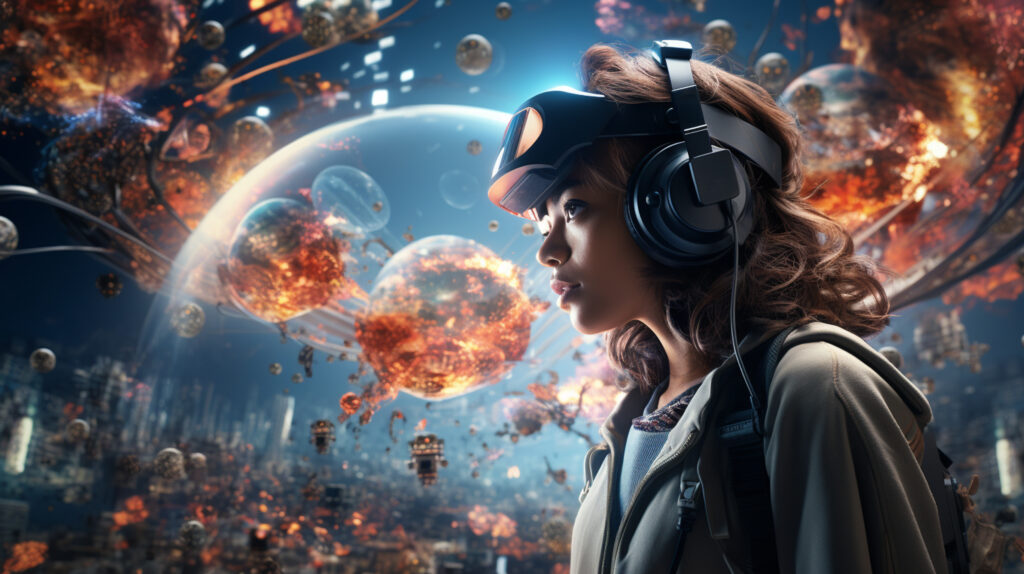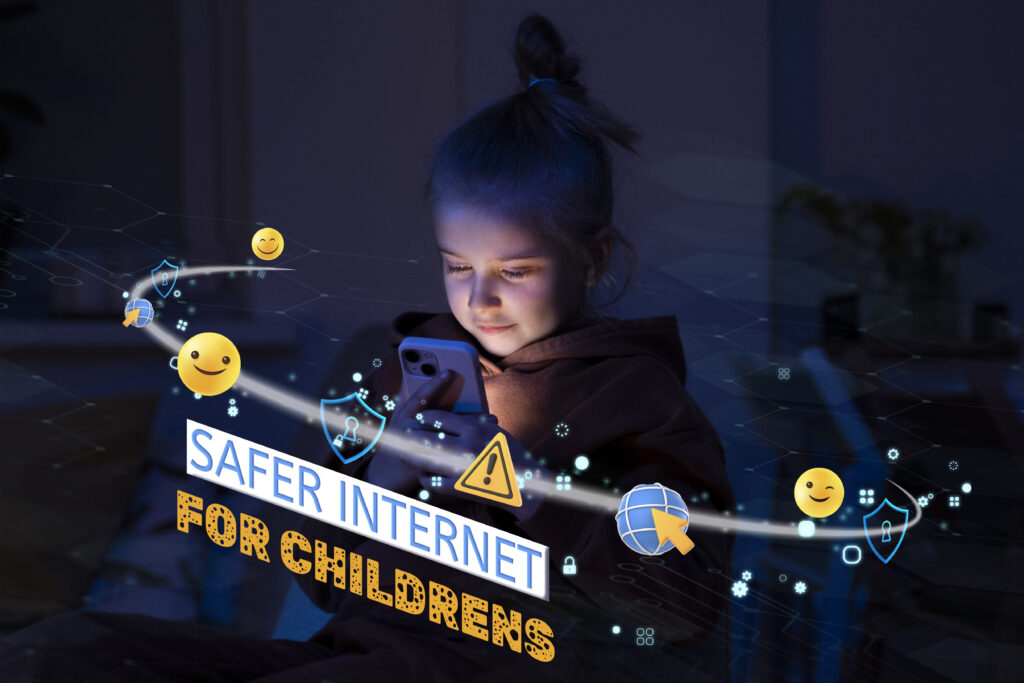AI Art Revolution: Innovative GANs in Months
In recent months, the art world has witnessed a quiet but profound metamorphosis brought about by the incursion of advanced Generative Adversarial Networks (GANs) into artistic creation.
As AI becomes increasingly capable of generating images that rival—and in some cases, surpass—the intricacy and expressiveness of human-made art, we find ourselves at the precipice of a new frontier in digital aesthetics.
This seismic shift has facilitated an unprecedented democratization of artistic tools, sparking a renaissance of creativity among those previously barred by skill or means. Still, it has also instigated a complex dialogue around the nature of artistry itself.
While the allure of these technologies is undeniable, they also pose profound questions about authenticity, originality, and the value of human touch in art.
As we stand on the cusp of this transformative period, one cannot help but ponder the broader implications that these rapidly evolving GANs might have for the future of creative expression across various sectors.
Key Takeaways
- GANs have revolutionized AI art by generating synthetic data that is indistinguishable from accurate data.
- GANs have accelerated creativity and production processes across industries, leading to the democratization of AI-generated art.
- OpenAI’s DALL-E model has achieved widespread adoption and success by generating highly original and complex images from textual descriptions.
- GANs have redefined creative workflows in various industries, such as film production, music composition, fashion, and architecture.
Understanding GANs

Generative Adversarial Networks (GANs) are a class of machine learning frameworks that pit two neural networks against each other to generate new, synthetic instances of data indistinguishable from accurate data. These two competing neural networks are known as the Generator and the Discriminator.
The Generator’s role is to create data that mimics the distribution of genuine datasets, while the Discriminator evaluates whether the generated data is natural or artificial. Through iterative cycles, the Generator improves its ability to produce realistic data, and the Discriminator enhances its capacity to detect discrepancies between genuine and synthetic data.
The training process is critical in refining the performance of both networks. Initially, the Generator produces easily distinguishable data from the actual dataset, leading to a high error rate. However, the Generator learns to create increasingly convincing data as training progresses. The discriminator concurrently adjusts its parameters to classify the authenticity of the data it reviews better. This adversarial process continues until the Generator produces data that the Discriminator can no longer reliably identify as fake, indicating a successful GAN training.
Despite the revolutionary aspects of GANs, their reliance on user input for refinement and their limitations in understanding the context of generated images are challenges that need addressing to fully unlock their potential as autonomous creative partners in various industries.
Rapid Advancements Explained

The evolution of GAN technology has catalyzed a paradigm shift in AI art. Breakthroughs in this field have enabled the synthesis of visually intricate and conceptually complex artworks. These creative algorithms have not only accelerated the creativity and production processes across various industries but have also precipitated a reevaluation of intellectual property norms and the role of human artists.
As GANs become more sophisticated, their impact reshapes the landscape of creative expression. This development has prompted both excitement and ethical considerations within the art community.
GANs Technology Evolution
As the landscape of artificial intelligence continues to evolve at an unprecedented pace, GANs (Generative Adversarial Networks) have emerged as a pivotal technology in driving the rapid transformation of the creative industries. Deep learning algorithms have advanced through the iterative adversarial process inherent to GANs to produce increasingly sophisticated and diverse outputs.
This technology evolution is evident in generative AI’s penetration into entertainment media, fashion, architecture, and marketing, streamlining creative workflows with unprecedented speed and efficiency. GANs to create fan art, comic books, and even collaborative tattoo designs have catalyzed a boom in the proliferation of digital art.
Meanwhile, stock image repositories exhibit divergent policies towards AI-generated content, reflecting the disruptive impact of this generative phenomenon on traditional content paradigms.
Breakthroughs in AI Art
Building upon the technological advancements of GANs, breakthroughs in AI art are rapidly reshaping the creative landscape, with text-to-image models spearheading a new era of innovation and artistic expression.
The future of Generative AI is not merely about automating the creative process but radically augmenting it to enable:
- Rapid prototyping and exploration in industries from entertainment to architecture.
- Collaborative and interactive art forms that merge human creativity with AI-generated art.
- Diverse applications and controversial stances, from outright bans to embracing partnerships.
Generative Adversarial Networks (GANs) have proven central to these developments, facilitating efficiencies previously unattainable and supporting a proliferation of AI-generated art. This proliferation is simultaneously driving media hype and challenging traditional paradigms of artistry and design.
Creative Algorithms’ Impact
Creative industries are experiencing a seismic shift as generative AI algorithms, like DALL-E and Stable Diffusion, dramatically accelerate innovation and idea generation.
These creative algorithms, driven by advancements in GANs (Generative Adversarial Networks), are transforming the landscape of AI art and enhancing the capabilities of human artists.
Generative AI’s efficiency in rapid prototyping opens up new avenues in entertainment media, fashion, architecture, and marketing, fostering collaboration and creativity across diverse fields such as fan art and tattoo design.
While stock image companies adapt to the technology’s potential disruption, integrating GANs facilitates an unprecedented rate of idea generation, potentially reducing working hours and altering traditional creative workflows.
Transforming Digital Artistry

Generative Adversarial Networks (GANs) have catalyzed an unprecedented shift in digital artistry, empowering creators with tools to unlock novel forms of expression and aesthetic possibilities.
This evolution in AI-powered art is redefining artists’ methodologies and challenging the established artistic value and ownership paradigms in the digital realm.
As we observe the integration of these technologies across various creative sectors, it is imperative to analyze both the broadening of creative horizons and the emergent complexities associated with the automation of artistic innovation.
Unleashing Creative Potential
Transforming digital artistry, text-to-image models like DALL-E are redefining the boundaries of creative expression by facilitating rapid prototyping and diverse visual exploration.
The emergence of Generative Adversarial Networks (GANs) has unleashed a new realm of creative potential, where artists and AI collaborate to amplify human creativity.
The implications are profound:
- Artists can iterate with unprecedented speed, transcending traditional constraints.
- GANs enable the synthesis of visual ideas that might be beyond the reach of solo human endeavor.
- The technology democratizes art creation, allowing a broader audience to engage in artistic pursuits.
This synergy between artists and AI is not a replacement but an expansion of the artist’s toolkit. By harnessing GANs, creators are navigating an exhilarating frontier of digital innovation, where the only limit is the imagination itself.
AI-Powered Art Evolution
Building upon the collaborative synergy between artists and AI, the evolution of AI-powered art is reshaping the landscape of digital artistry with innovative applications and implications across various industries.
The advent of Generative Adversarial Networks (GANs) has been instrumental in generating realistic textures, forms, and aesthetics, heralding a new era in artificial intelligence-driven creativity.
Text-to-image models facilitate swift prototyping, enabling rapid ideation and exploration—vital in dynamic sectors like entertainment, fashion, and marketing.
In the tattoo industry, generative AI engenders unique client-artist collaborations, customizing designs with unprecedented precision.
Meanwhile, stock image companies confront the rise of AI-generated imagery diversely, showcasing the industry’s split in embracing or rejecting AI’s burgeoning role.
Fundamentally, GANs catalyze a transformative AI-powered art evolution, democratizing and accelerating creative expression and production.
The Mechanics Behind GANs

Looking into the mechanics of Generative Adversarial Networks (GANs), we observe a complex interplay between two distinct neural networks—the Generator and the Discriminator—that iteratively evolve through competition to produce intricate and innovative art.
The Generator starts by synthesizing data from random noise, aspiring to create indistinguishable outputs from authentic artworks. Meanwhile, the Discriminator strives to discern the fabricated from the genuine.
The iterative training process is a sophisticated dance where the Generator learns to craft increasingly convincing forgeries while the Discriminator becomes more astute in its evaluations.
The potential of GANs to revolutionize the realm of AI-driven art is underscored by their:
- Ability to generate high-quality, realistic images that challenge our perception of artistry.
- Capacity to adapt and learn from each iteration, pushing the boundaries of creativity.
- Proficiency in producing diverse artistic expressions that resonate with human emotions.
In this technical ballet, both networks are trained through backpropagation and gradient descent, fine-tuning their parameters until the Generator’s artistry can fool the Discriminator with high probability, indicating a convergence to a Nash equilibrium.
The evolution of GANs showcases the convergence of technological innovation and artistic creation, opening new vistas for AI in human expression.
GANs in Creative Industries
Generative Adversarial Networks (GANs) have become instrumental in redefining creative workflows across industries, providing tools for design enhancement and concept iteration with unprecedented speed and variety.
In film production, AI-driven methods are being integrated to streamline tasks such as storyboard generation and visual effects, offering cost reductions and novel artistic possibilities.
Furthermore, the music industry is experimenting with GANs for composition and sound design, suggesting a future where AI’s role in creative expression is collaborative and transformative.
GANs Transforming Design
In the realm of creative industries, Generative Adversarial Networks (GANs) have emerged as pivotal tools, reshaping the design landscape by enabling unprecedented levels of innovation and efficiency. These AI-driven systems facilitate rapid prototyping and idea generation, allowing designers to iterate and evolve concepts quickly and precisely.
Accelerated creative workflows in entertainment, fashion, and architecture characterize the impact of GANs on design. These industries have significantly reduced the time and resources required for concept development, leading to faster production cycles and increased productivity.
Furthermore, GANs have fostered novel forms of collaboration and artistry in fields such as comic creation and tattoo design. Artists can now leverage the power of GANs to create unique and intricate designs, pushing the boundaries of their craft and exploring new creative possibilities.
However, introducing GANs into the design industry has also sparked a dichotomous response from stock image companies. While some view this technology as disruptive, others see it as transformative. GANs have the potential to revolutionize the stock image market by generating high-quality, customizable images at a fraction of the cost and time traditionally required.
As GANs continue to advance, they catalyze new artistic possibilities within AI image synthesis and provoke critical discourse on ethical practices in producing and consuming computer-generated content in creative industries. Questions surrounding authorship, copyright, and the potential for misuse of AI-generated content have become prevalent, forcing designers and industry professionals to navigate an evolving ethical landscape.
AI-Driven Film Production
As the film industry embraces Generative Adversarial Networks (GANs), AI-driven film production is poised to redefine the traditional methods of cinematic storytelling and visual effects. This new technology, integrating machine learning algorithms, has become an essential asset for creative professionals. GANs facilitate the generation of intricate visual elements, from fantastical landscapes to hyper-realistic characters, streamlining the workflow in film production.
| Application | Benefit | Challenge |
|---|---|---|
| Visual Effects | Enhanced realism; Time-efficient rendering | Balancing artistry and automation |
| Concept Art | Rapid prototyping; Infinite variations | Ensuring originality |
| Character Design | Diverse representation; Consistent quality | Preserving creative control |
| Scene Composition | Dynamic environments; Cost reduction | Maintaining narrative coherence |
AI tools such as OpenAI’s DALL-E and Stability AI’s Stable Diffusion are at the forefront, pushing the boundaries of what can be archived quickly and raising discussions on the evolving landscape of creativity and ownership in filmmaking.
Music Composition With GANs
The advent of Generative Adversarial Networks (GANs) in music composition marks a transformative era for creative expression and innovation within the music industry. GANs represent a significant leap in the ability to generate novel musical pieces, enabling a fusion of technology and creativity that pushes the boundaries of conventional composition.
With precise algorithmic design, these networks analyze vast music datasets to synthesize and evolve unique compositions. The creative potential is vast, as GANs can assimilate various genres and styles, producing work that resonates with both the algorithm’s training and the artist’s vision, thus shaping the future soundscape in unforeseen and exciting ways.
- Enhancing rapid prototyping of new musical concepts
- Facilitating an unprecedented exploration of soundscapes
- Democratizing music creation for a broader range of artists
Artistic Milestones Achieved
Generative Adversarial Networks (GANs) have catalyzed a paradigm shift in digital artistry, setting new benchmarks for creativity and innovation across various industries. As AI technology evolves, GANs have played a pivotal role in enabling rapid prototyping and facilitating a more explorative approach to the creative process. This has been particularly impactful in sectors such as entertainment media, fashion, and architecture, where the ability to quickly and efficiently produce new images and concepts is invaluable.
GANs have streamlined content creation in marketing by generating original, eye-catching visuals that resonate with target audiences, enhancing engagement and brand identity. Additionally, in more personalized settings, AI technology has fostered unique collaborations, such as between tattoo artists and clients, leading to custom designs that are both innovative and deeply personal.
One of the most notable artistic milestones achieved by GANs is the widespread adoption and success of OpenAI’s DALL-E model. Its ability to generate highly original and complex images from textual descriptions has captivated over a million users within months and propelled a series of similar models from competing entities, marking a significant leap forward in democratizing AI-generated art.
Ethical Considerations
While GANs have propelled the frontiers of AI-generated art to remarkable heights, they also bring forth pressing ethical considerations that must be addressed. The surge in using AI to create art raises pivotal ethical questions, particularly around the issues of authorship and originality. At the heart of this debate is the relationship between human artists and the technology that emulates aspects of their creativity.
- The ambiguity of authorship: Whose work is it when an AI, programmed by humans, generates art?
- The potential for infringement: How does AI-generated art impact the livelihood of human artists?
- The challenge of authenticity: Can AI creations be genuinely original, or are they reconfiguring existing human expressions?
GANs, as advanced generative systems, have the potential to enrich and complicate the art landscape. Their ability to produce novel compositions rapidly must be weighed against the potential for eroding the unique value traditionally ascribed to human creativity.
Ethical frameworks and guidelines are essential in navigating the integration of GANs into the art world. These frameworks must ensure that AI is used responsibly, respecting human artists’ rights and their work’s integrity.
Real-World GAN Applications
In creative industries, GANs are increasingly employed to transform text into vivid images, revolutionizing traditional workflows in the entertainment, fashion, and architecture sectors. These generative models facilitate a novel form of collaborative art-making, where algorithms interpret and materialize human ideas into visual representations.
The versatility of GANs to produce images from textual descriptions allows architects to envisage structures before laying a single brick and fashion designers to preview textile patterns without weaving any fabric.
In entertainment, GANs have become instrumental in ideation processes, particularly in visual effects, where they help generate preliminary effects concepts at a rapid pace. Meanwhile, the tattoo industry leverages this technology for customized design creation, bridging the gap between an artist’s imagination and client expectations. However, deploying GANs has ignited mixed reactions; some artists express concerns over potential job displacement, while others embrace these tools for accelerating creative output.
Despite their promising applications, GANs possess inherent limitations. Their opaque operational nature—deemed the ‘black box’ issue—necessitates human oversight to ensure the generated art aligns with intended prompts. Furthermore, the burgeoning hype surrounding GANs underscores their prospective utility across various industries, from marketing visuals to innovative drug discovery methodologies, signaling a transformative era for AI-generated art.
Future of AI-Generated Art
Recognizing the transformative impact of GANs in current creative domains, the future of AI-generated art holds immense potential to redefine industry standards and inspire unprecedented forms of expression. As a powerful tool, generative AI alters the landscape of digital art and is poised to affect the broader art world as it continues to evolve.
The agility to generate intricate visuals rapidly paves the way for new artistic movements and interactive art experiences. Integrating GANs with virtual and augmented reality could create immersive art installations that respond dynamically to audience interaction. AI’s ability to analyze and replicate complex patterns could lead to a renaissance of forgotten art styles personalized to the tastes of modern audiences. Collaborative platforms powered by GANs may emerge, where artists and AI work together to push the boundaries of creativity and conceptual art.
Technical analysis of current trends suggests that generative AI models like DALL-E will become more sophisticated, enabling greater precision and detail in AI-generated artwork. As the technology matures, ethical considerations and geopolitical factors will play a crucial role in shaping its trajectory.
The future promises a fusion of human creativity and artificial intelligence, offering a canvas for artists and technologists to explore the uncharted territories of digital expression.
GANs Shaping Artistic Expression
Generative Adversarial Networks (GANs) catalyze a paradigm shift in artistic expression by enabling the fusion of human ingenuity with advanced computational processes. These AI models are revolutionizing sectors by drastically enhancing creative workflows. In entertainment media, GANs facilitate rapid visual effects and concept art development. Fashion designers exploit GANs for innovative pattern and garment creation. Architects integrate GAN-generated visuals to envision new structures, and marketers harness them to produce compelling visual campaigns.
The synergy of GANs and human artists is producing new images that were once beyond the scope of manual creation. This collaboration yields unique artwork for fan-based creations, comic books, and customized tattoo designs. Despite the transformative impact on artistry, the reception of GAN-produced images varies across industries. Stock image companies, for example, confront the influx of AI-generated images with divergent strategies.
| Industry | Impact of GANs |
|---|---|
| Entertainment | Rapid prototyping in visual effects |
| Fashion | Innovative pattern generation |
| Architecture | Enhanced visualizations for structures |
| Marketing | Efficient creation of promotional images |
FAQs
What is the role of Generative Adversarial Networks (GANs) in revolutionizing AI art?
GANs play a pivotal role in revolutionizing AI art by enabling realistic and diverse visual content generation. They consist of two neural networks, a generator, and a discriminator, engaged in a competitive learning process to produce high-quality and creative outputs.
How have GANs contributed to the rapid advancement of AI art?
GANs have contributed to the rapid advancement of AI art by facilitating the creation of realistic images, textures, and styles. Their ability to learn from large datasets and generate novel content has accelerated the development of diverse and innovative artistic expressions.
What makes GANs particularly innovative in the context of AI art?
GANs are innovative in AI art due to their generative nature, allowing them to create content not explicitly present in the training data. Their ability to capture and reproduce artistic styles, textures, and details contributes to the richness and diversity of AI-generated art.
Can GANs replicate specific art styles or emulate famous artists?
Yes, GANs can be trained to replicate specific art styles or emulate the works of famous artists. Using appropriate training datasets, GANs can learn the characteristics of a particular style and generate art that closely resembles the chosen aesthetic.
How quickly have advancements in GAN technology impacted the field of AI art?
Advancements in GAN technology have had a swift and significant impact on AI art. Researchers and artists have explored new techniques, architectures, and applications within a short period, leading to continuous innovation and evolution in AI-generated art.
